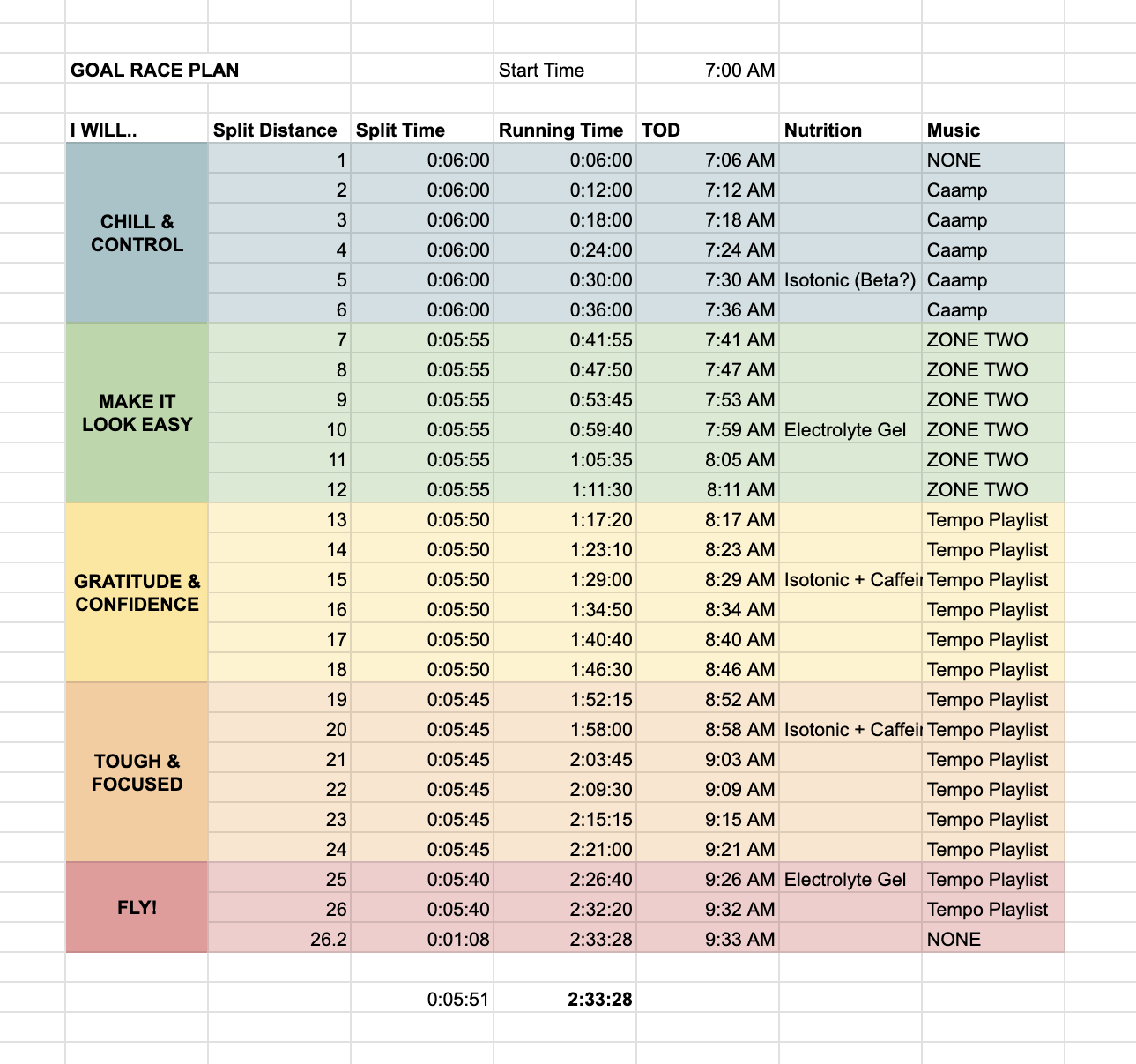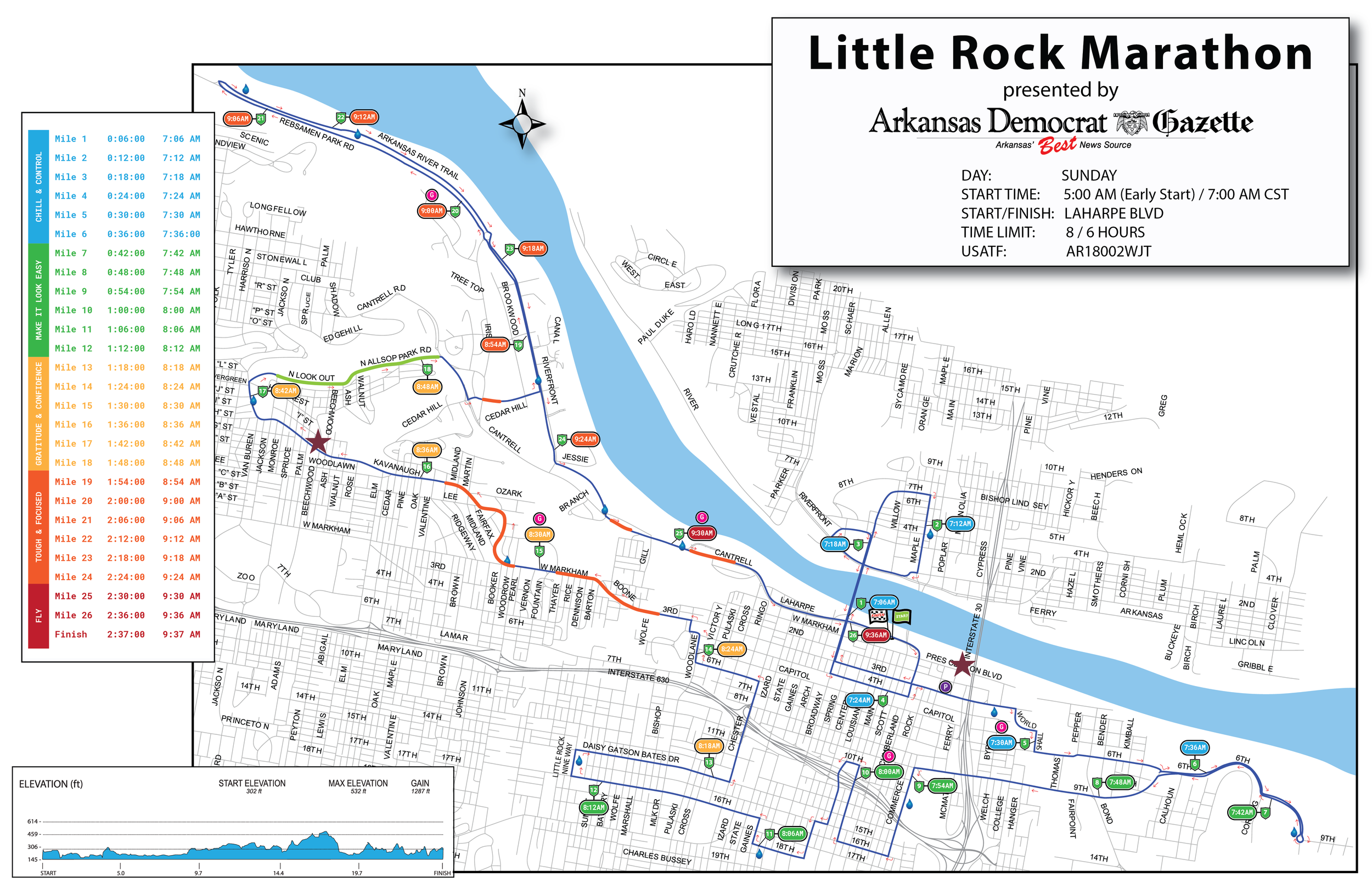Navigating the Pre-Race Anxiety Maze: Little Rock Marathon Strategy
With the big day drawing near, it was time to truly map out what I hoped to accomplish for my debut marathon—well, my debut back into racing. This task, however, proved to be surprisingly riddled with anxiety. On one hand, the training had gone well, and a part of me felt confident enough to aim for a sub-2:30 finish. On the other, a more cautious voice kept whispering that I should stick to the 2:36 I felt was well within my capabilities.
Like with most complicated life decisions, a spreadsheet emerged. Trying to predict and optimize my marathon was no different. The week before the race, I built a fairly robust spreadsheet that mapped out all the various race-day scenarios I was debating. Maintain a steady 6:00/mile for the entire 26.2? Start at 6:00/mile and gradually drop the pace? Or go out fast and try to hang on? The more scenarios I added to the spreadsheet, the more stressed I became. So, naturally, I turned to my Drury bros—Andy, Steven, and Matt—who have been my rocks throughout this whole adventure, for their invaluable advice.
First up was Steven. Being the ultimate hype man, his competitive spirit shone through, pushing me to go for that ambitious sub-2:30 mark. 'You've got it, man! Go for it!' was the gist of his enthusiastic encouragement.
Next, I spoke with Andy. Ever the wise, older brother figure, he offered a more conservative perspective. He advised that a 2:36 or even a 2:40 would be a more realistic goal, and still a significant achievement for my first marathon back.
This left me even more puzzled and, honestly, more stressed. While both of these times represented a huge step up from my initial sub-3 goal, the nearly 20-second per mile difference between them felt enormous and left me even more uncertain about how to approach the race.
My final call was to Matt. Our former team captain, who I view as our team's Yoda, seems to possess an uncanny knowledge of all things running and generally knows exactly what to say. This time was no different. We talked for nearly an hour. I laid out my struggles with determining a goal time and all the convoluted math I was doing to analyze the possible outcomes. I even shared some of my more outlandish ideas, like breaking the race into sections and dedicating a mile to various people – which, in hindsight, sounded incredibly overwhelming and impossible to remember. Classic Derek, overthinking everything. Matt gently reminded me that the progress I had made was indeed remarkable. However, achieving that sub-2:30 goal, which represented the absolute upper limit of what my current fitness suggested, would require near-perfect execution at every level. Everything would have to go flawlessly, and on a marathon debut (even a debut back), things almost never go perfectly. There’s a significant jump from those long training runs to racing the full 26.2 miles.
Ultimately, we decided the best race strategy for me was to chase what we considered a 90% chance of success versus the perfect race (what my fitness might suggest, but requiring everything to align perfectly). What that meant was breaking the race into five manageable sections:
Chill & Control (Miles 0-6): I'm notorious for starting too fast. Something about race day makes me want to jump out and go hard from the gun. However, for this race, the plan was to settle into a comfortable pace, slightly slower than goal pace. Focus on conserving energy and not getting caught up in the initial surge. Aim for around 6:00/mile.
Make It Look Easy (Miles 7-12): Building on the momentum from the first segment, the goal was to stay super relaxed and arrive at the halfway point feeling strong and ready to tackle the back half. I wanted anyone watching me in this section to think, 'Damn, he’s making that look easy.' This section was inspired by a random Instagram reel of Kenyan runners crushing a treadmill workout with their coach yelling, 'Make it look easy!' Aim for around 5:55/mile.
Gratitude & Confidence (Miles 13-18): This section of the race held special significance. It was arguably the hardest part of the course, with the big hills, but it also ran by my house and through the neighborhood where I had done most of my training. Here, I wanted to focus on all the people in my life who have supported me over the last couple of tough years, and arrive at mile 18 feeling grateful and confident that I could really push in the later stages. Aim for around 5:45/mile.
Tough & Focused (Miles 19-24): The less glamorous part of the race, a long, flat out-and-back section of the river trail. I knew this is where the race would be won or lost. The goal was simple: be tough and stay focused. Find my rhythm and embrace the pace. Aim for around 5:45/mile.
Fly! (Miles 25 - 26.2): The final 2.2 miles of the race. The plan here was to release the governor and give absolutely everything I had left. Aim for around 5:40/mile.
So, there it was. A plan born from anxiety, tempered by wisdom, and fueled by a burning desire to see what I was truly capable of. While the allure of a blistering sub-2:30 was tempting, the pragmatic approach of aiming for a strong, well-executed race felt like the right call for this comeback marathon. The spreadsheet was closed, the advice heeded, and the sections of the race etched in my mind. Now, all that was left was to execute on race day and see how this blueprint would unfold on the streets of Little Rock.





